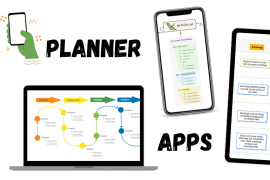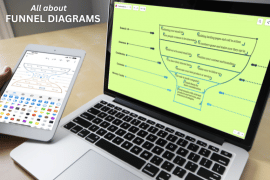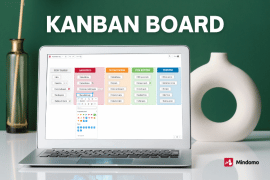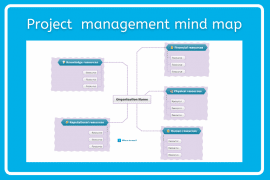
Project management is an essential component of any successful business. It is the process of planning, organizing, and executing a project from start to finish.
Every project is unique. But there are various project management tools that can help ensure that your project is completed efficiently and effectively.
In this article, we’ll explore the 8 best project planning techniques. Each one can be applied to your project to help your business stay on track and achieve its goals. And the best thing is that you don’t even need dedicated project management software to use them.
A mind mapping solution like Mindomo offers everything you need to track the project life cycle of your next endeavor.
From Gantt Charts to Kanban Boards, there’s a great project management technique for every project. It doesn’t matter how big or small, how complex or simple. You can have a successful project by using the right project management tools.
So, let’s dive in and explore the project management tools that can take your business to the next level.
What is project management?
Project management is the process of planning, organizing, and executing a project from start to finish. It involves the application of skills, knowledge, tools, and techniques to meet the project’s requirements.
To ensure that a project is completed successfully, project managers must create a project plan. This will outline the project’s objectives, timeline, budget, and resources.
Project teams must also assign tasks to each team member. They must monitor project progress. They need a way to accomplish project scheduling. They have to manage critical tasks. They need to ensure that the project stays on track. And they can’t forget to use a program evaluation review technique when all is said and done.
Project management is essential because it helps businesses achieve their goals and objectives. How? By delivering projects on time, within budget, and to the required quality standards.
With the right project management approach, businesses can streamline their processes. They can complete tasks and increase productivity. And ultimately, they can drive their success. However, since every project is unique, there are various project management techniques that businesses can use to manage their projects effectively.
What are the elements of project management?
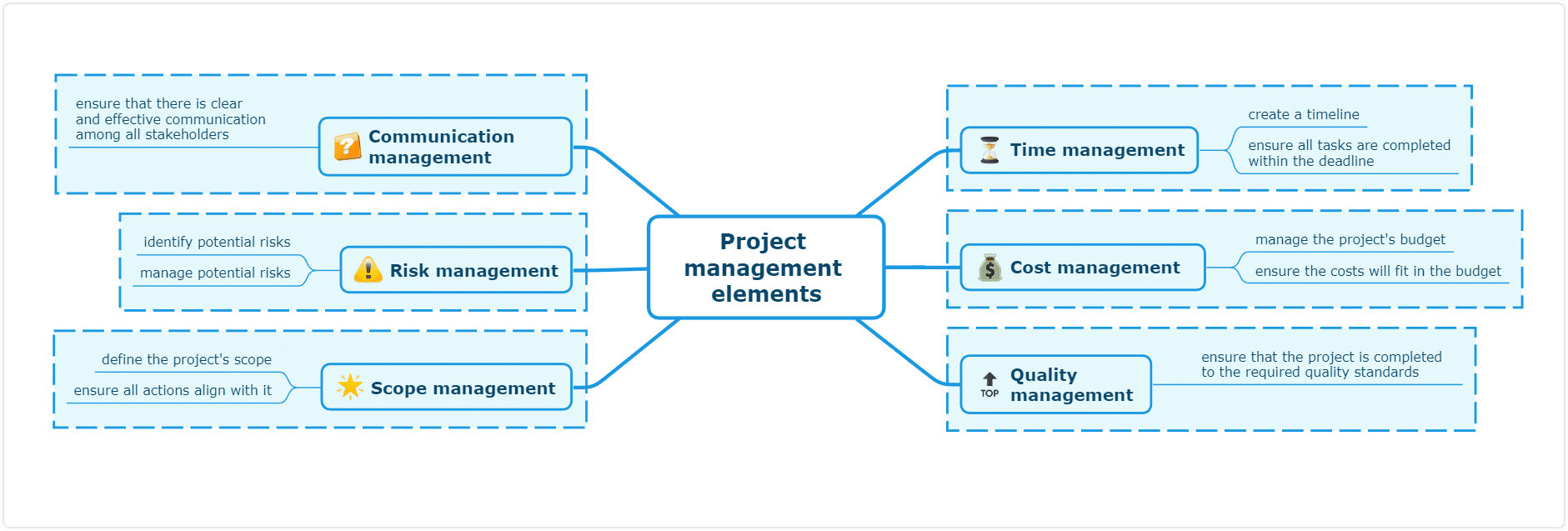
Project management comprises several elements, including:
- Time management: This involves creating a timeline for the project and ensuring that each task is completed within the allocated timeframe.
- Cost management: This involves managing the project’s budget and ensuring that it is completed within the allocated budget.
- Quality management: This involves ensuring that the project is completed to the required quality standards. It also means that the end product meets the customer’s expectations.
- Scope management: This involves defining the project’s scope and ensuring that the project stays within its defined boundaries.
- Risk management: This involves identifying and managing potential risks that could impact the project’s outcome.
- Communication management: This involves ensuring that there is clear and effective communication among all stakeholders. This includes team members, customers, and vendors.
Each of these elements plays a crucial role in ensuring that a project is completed successfully. Project managers need to keep all of these elements in mind. That’s how they can ensure that the project is completed within the allocated timeframe without project costs going over budget. And while maintaining the required quality standards.
Why are there multiple project management techniques?
There are multiple project management techniques because different projects have different requirements and constraints. In addition, those with different project management roles may prefer certain techniques.
For example, a software development project may require a different approach than a construction project. Similarly, a project with a short timeline may require a different approach than a project with a longer timeline.
By having multiple project management techniques, businesses can choose the approach that best suits their project’s unique requirements. This flexibility allows businesses to tailor their approach to the project and ensure that it is completed as efficiently and effectively as possible.
Furthermore, project management techniques are constantly evolving as businesses seek to improve their processes and achieve better results. New techniques are developed, and existing techniques are refined to meet the changing needs of businesses. This continuous evolution of project management techniques allows businesses to stay ahead of the competition and achieve their goals.
1. Gantt charts
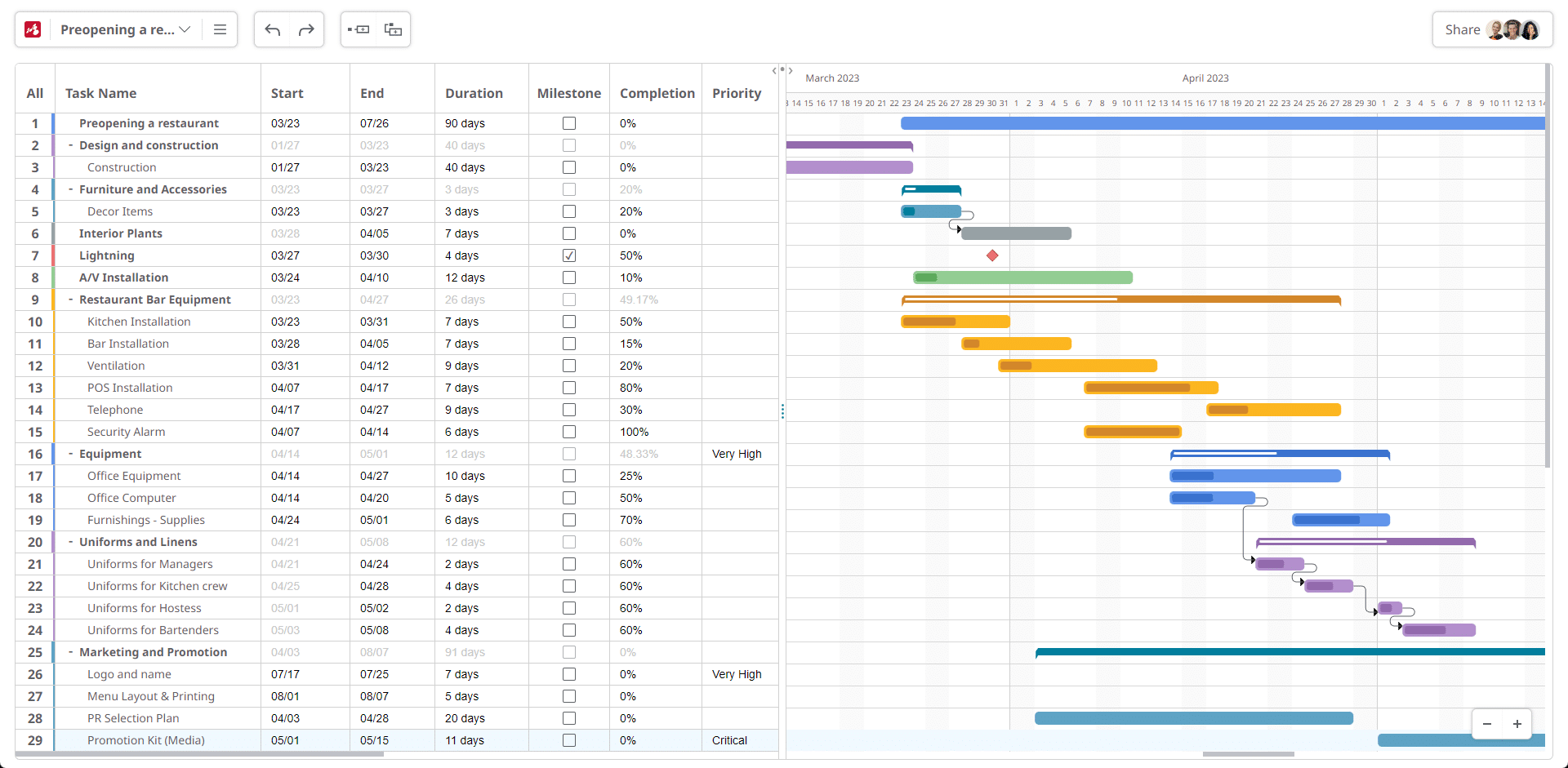
Gantt charts are one of the oldest project management techniques out there. It provides a visual representation of a project’s schedule.
It displays a timeline of manageable tasks, their start and end dates, and their dependencies. Gantt charts are named after their inventor, Henry Gantt, who developed them in the early 1900s.
How are Gantt charts designed?
A Gantt chart typically consists of a horizontal bar chart that displays the project schedule. The chart’s horizontal axis represents the project timeline. The vertical axis represents the project tasks.
Each task is represented by a horizontal bar that spans the duration of the task. The bar’s position on the timeline indicates the task’s start and end dates. Its length represents the task’s duration.
What are the benefits of using a Gantt chart for project management?
Gantt charts are valuable project planning tools because they provide an easy-to-understand visual representation of the project’s schedule. They allow project managers to see how tasks are interdependent and how delays in one task can impact the project timeline. Additionally, Gantt charts help project managers track progress, identify bottlenecks, and make adjustments as needed.
How can a project manager use a Gantt chart?
One example of how a Gantt chart can be used is in construction project management. A construction project typically has many interdependent tasks, such as excavation, framing, and electrical work.
By creating a Gantt chart, project managers can identify the critical path of the project. This is the sequence of tasks that must be completed on time to ensure that the project is completed on schedule. They can also identify the tasks that can be done in parallel to save time and reduce the project timeline.
It’s important to choose a full featured Gantt chart maker that allows you to easily edit, collaborate in real time, delegate and assign tasks, and easily track the progress.
2. Kanban Board Project Management Tools
Kanban is a visual project management technique that focuses on improving workflow efficiency and reducing waste. The Kanban board is a tool used in the Kanban system to visualize the workflow and progress of a project. It’s a board that displays the project’s tasks, status, and progress.
How are Kanban boards designed?

A Kanban board typically consists of columns that represent the different stages of the workflow, such as “To Do,” “In Progress,” and “Done.” Each task is represented by a card that contains information about the task, such as its name, priority, and due date. The cards are moved from column to column as the task progresses through the workflow.
What are the benefits of using a Kanban board for project management?
Kanban boards are valuable project planning tools because they provide a clear and easy-to-understand visual representation of the project’s workflow. They allow project managers to identify bottlenecks and areas for improvement and to ensure that tasks are completed in the correct order. Additionally, Kanban boards help teams stay organized, focused, and on track.
How can complex projects be completed with the help of a Kanban board?
One example of how a Kanban board can be used is in software development. In a software development project, the Kanban board can be used to track the progress of individual tasks, such as bug fixes or feature development. The board can also be used to visualize the flow of work, identify bottlenecks, and ensure that tasks are completed in the correct order.
Use this template offered by Mindomo:

Another example of how a Kanban board can be used is in marketing. In a marketing project, the Kanban board can be used to track the progress of different campaigns, such as social media or email marketing. The board can also be used to visualize the flow of work, identify bottlenecks, and ensure that tasks are completed in the correct order.
Overall, Kanban boards are a powerful project planning technique that can help businesses improve workflow efficiency, reduce waste, and ensure that projects are completed on time and on budget.
3. Work Breakdown Structure (WBS)
The Work Breakdown Structure (WBS) is a project planning technique that breaks a project down into smaller, more manageable components. It’s a hierarchical structure that starts with the project’s main deliverables and then breaks them down into smaller, more specific tasks.
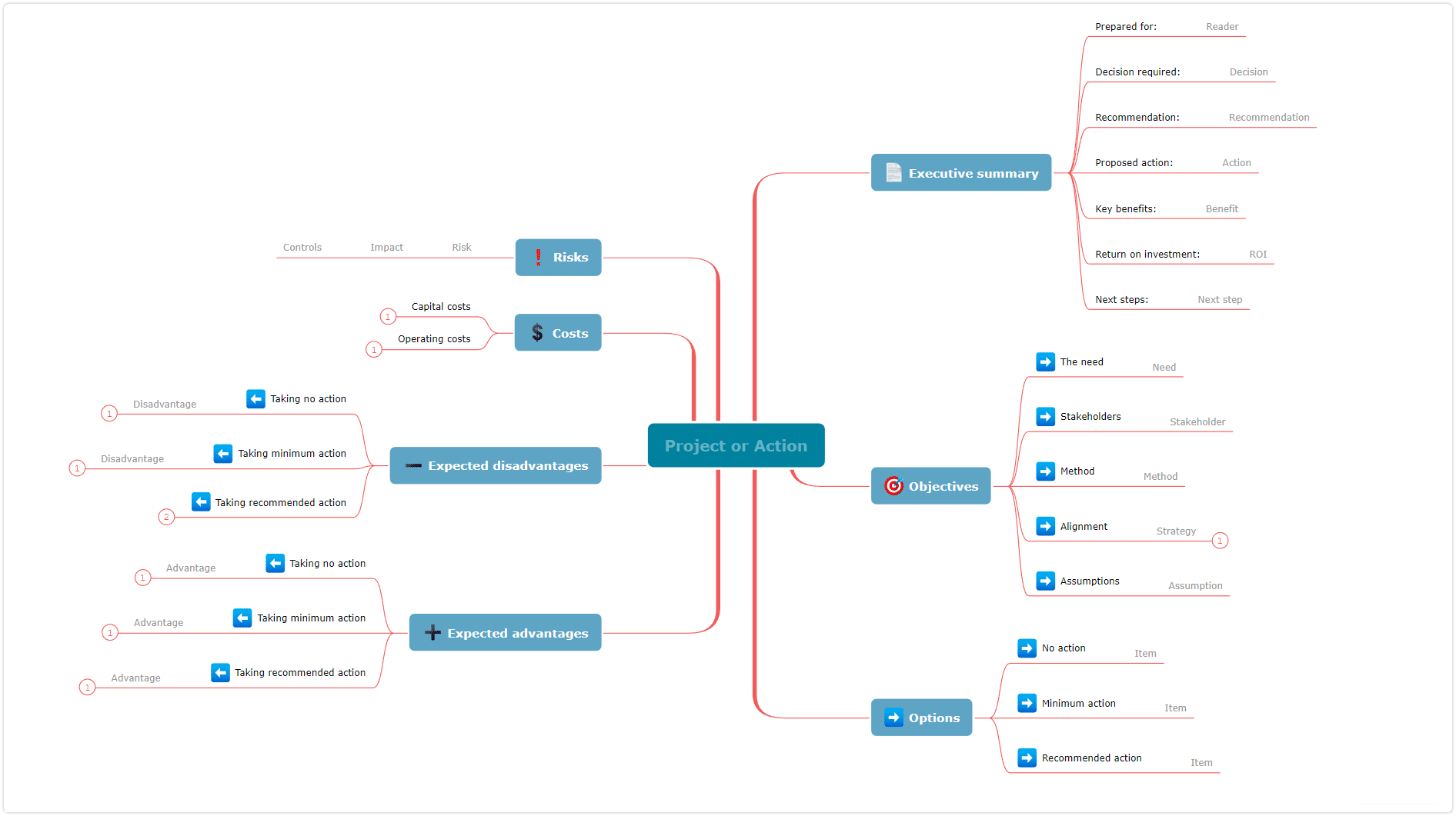
How is WBS structured?
The WBS typically consists of a tree-like structure that represents the project’s deliverables and sub-deliverables. Each level of the WBS represents a different level of detail, and each task is broken down into smaller, more specific sub-tasks. The WBS is useful because it helps project managers identify all of the tasks that need to be completed to deliver the project successfully.
What are the benefits of WBS for project management?
WBS is valuable toproject planning technique. It helps project managers break complex projects down into more manageable components. And it ensures that all of the necessary tasks are identified and completed. Additionally, the WBS can help project managers estimate costs, allocate resources, and track progress.
How can a project manager use WBS in the real world?
One example of how the WBS can be used is in event planning. In event planning, the WBS can be used to break down the event into different deliverables. This could include selecting a venue, designing the program, and managing logistics. Each of these deliverables can then be broken down into smaller tasks. For example, sending invitations or setting up the sound system might be specific project activities.
Overall, the WBS is a powerful project planning technique that can help businesses break down complex projects. It helps ensure that all the tasks are identified and completed. By using the WBS, project managers can estimate costs, allocate resources, and track progress more effectively. This will make sure that projects are completed on time and on budget.
4. Critical Path Method Project Management Technique (CPM)
The Critical Path Method (CPM) is a project planning technique that helps project managers identify the critical path. The critical path is the sequence of tasks that must be completed on time for the project to be completed on schedule. The CPM uses a network diagram that displays the project’s tasks and their dependencies. You can use a flowchart diagram to apply this technique:
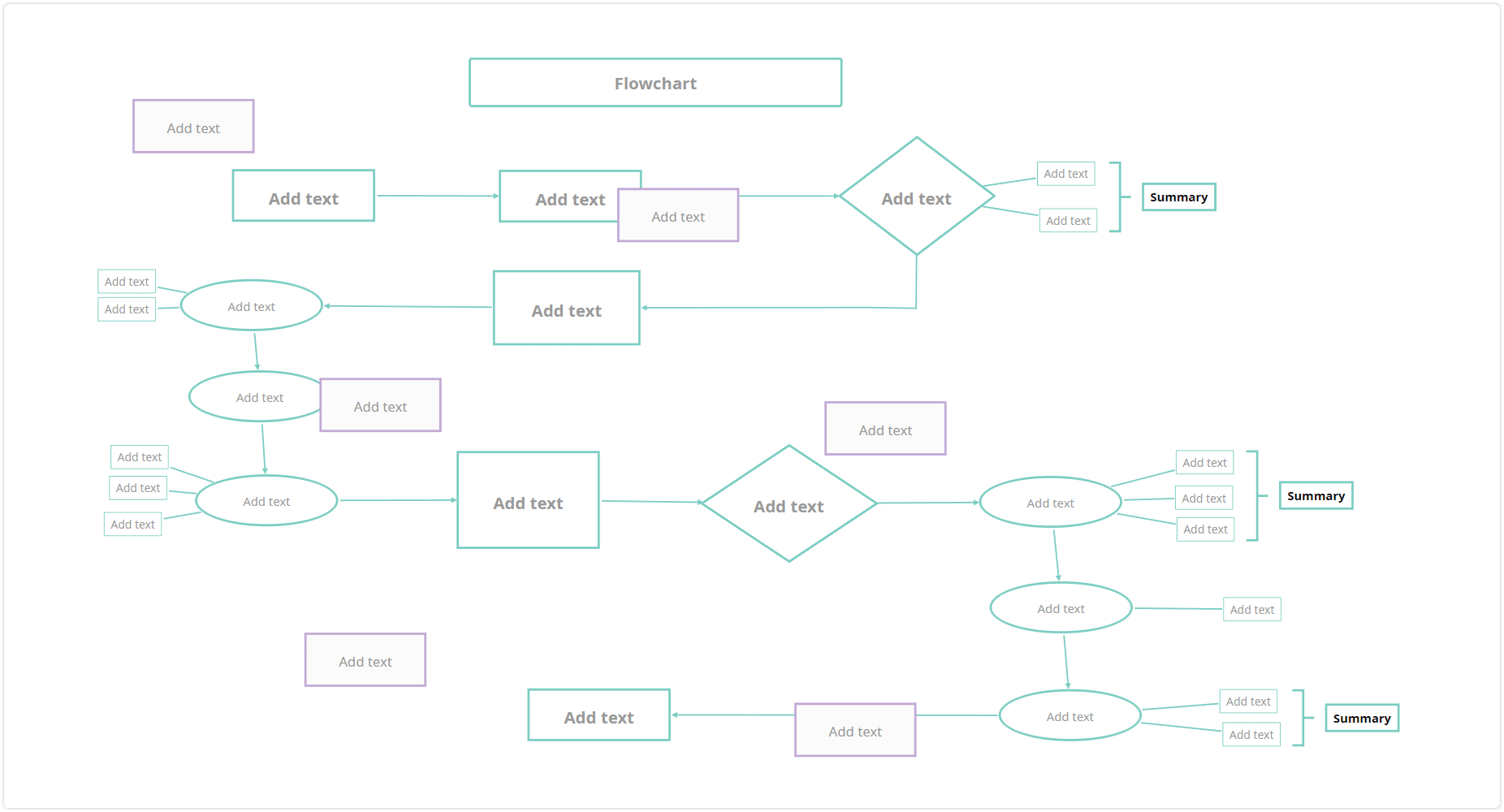
How is the critical path method visualized?
The critical path method involves identifying all of the tasks that need to be completed to deliver the project. Then, you need to estimate their duration and determine their dependencies.
The network diagram is then created to visualize the sequence of tasks and their dependencies. Once the network diagram is created, the critical path is determined by identifying the longest sequence of dependent tasks.
What are the benefits of CPM for a project manager?
The critical path method is a valuable project planning technique because it can help a project manager identify critical tasks. These are the tasks that the project team needs to achieve for project completion. By identifying the critical path, project managers can focus their attention on the tasks that are most important to the project’s success.
What are specific examples of CPM in action?
One example of how the CPM can be used is in software development. In a software development project, the CPM can be used to identify the critical path. This could include tasks such as design, coding, and testing. By focusing on completing these tasks on time, project managers can ensure that the software is delivered on schedule.
5. Waterfall Technique
The Waterfall Technique is a project management methodology that is widely used in software development and engineering projects. It is a linear sequential approach that involves completing each phase of the project before moving on to the next phase.
How is the Waterfall technique structured?
The Waterfall Technique consists of a series of phases. These include requirements gathering, design, implementation, testing, and maintenance. Each phase must be completed before the next phase can begin.
The Waterfall Technique is a highly structured approach that is best suited for projects with well-defined requirements and a clear understanding of the desired end result.
What are the benefits of the waterfall technique?
One of the benefits of the Waterfall Technique is its predictability. Because each phase of the project must be completed before the next phase can begin, the project timeline and budget can be accurately estimated.
Additionally, the Waterfall Technique allows for a high degree of documentation and planning, which can help ensure that the project meets its goals. This makes it one of the most effective project management methods.
How is the Waterfall Technique used in the real world?
One example of how the Waterfall Technique can be used is in the development of a new software application. In this scenario, the first phase of the project would involve gathering requirements from stakeholders and end-users.
Once the requirements are defined, the design phase would begin, in which the user interface, data structures, and algorithms are defined. After the design phase is completed, the implementation phase would begin, in which the software is developed and coded. Once the software is developed, it would be tested thoroughly before it is deployed to end-users.
Another example of how the Waterfall Technique can be used is in the development of a new manufacturing process. In this scenario, the first phase of the project would involve researching and designing the new process. Once the design is complete, the implementation phase would begin, in which the new process is built and tested. Once the new process is tested and validated, it would be put into use in the manufacturing facility.
6. Business Mind Map
Business mind maps are visual diagrams that can be used to brainstorm, organize, and plan projects. They are particularly useful for capturing ideas. Or identifying relationships between different ideas. Or breaking down complex projects into manageable parts.
How is a business mind map structured?
Business mind maps are created by starting with a central idea, such as the project goal, and then adding related ideas in a hierarchical or non-linear manner. The central idea is placed in the middle of the diagram, and related ideas are added as branches or nodes. The branches can be further divided into sub-branches to add more detail and complexity.
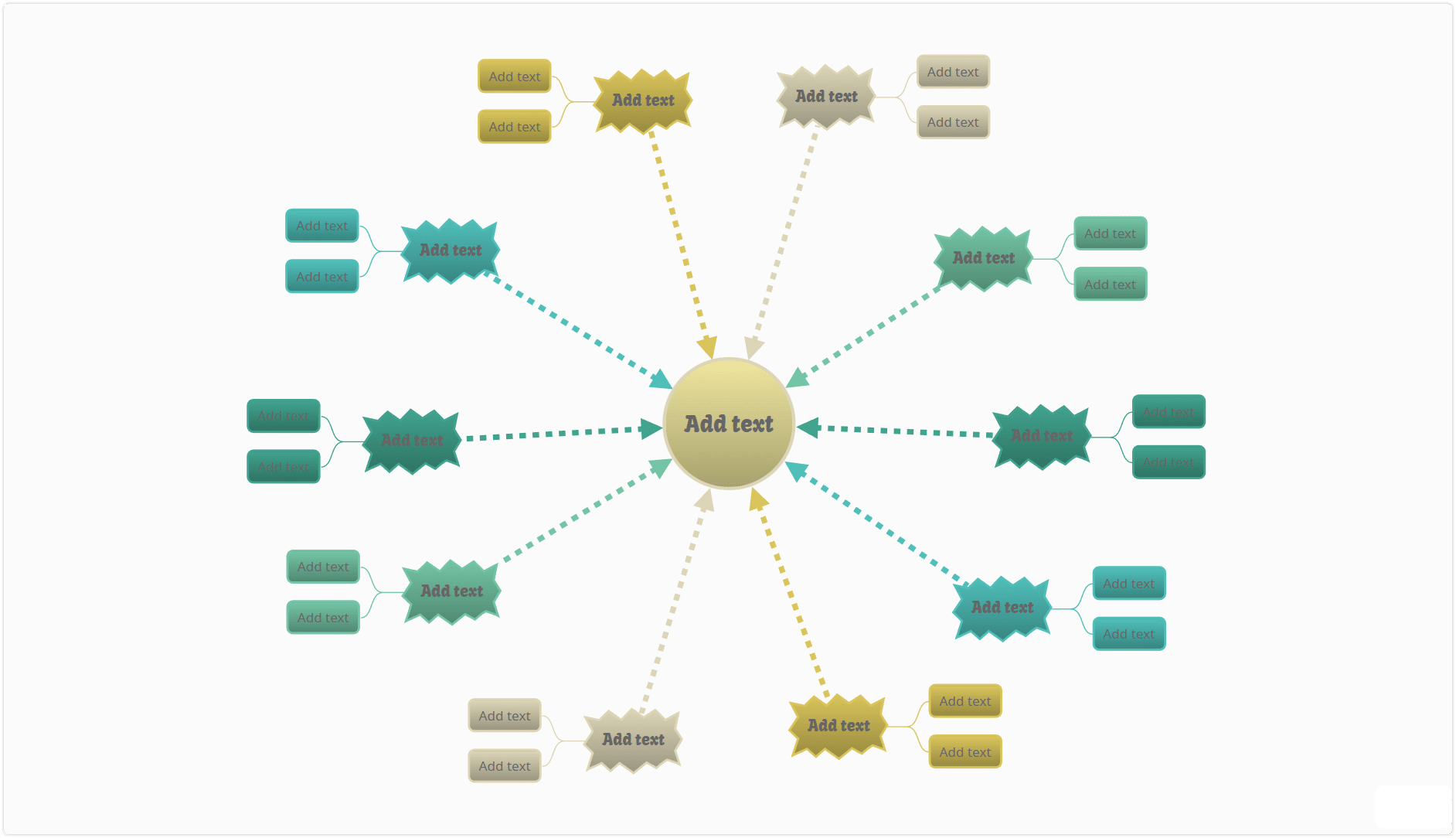
What are the benefits of business mind maps?
One of the benefits of business mind maps is their flexibility. They can be used for a wide range of projects, from product development to marketing campaigns. They are particularly useful for brainstorming sessions, where a large number of ideas need to be generated quickly and organized in a meaningful way.
Business mind maps can also be used to plan the different phases of a project. By breaking down a project into smaller parts and mapping out the relationships between them, it becomes easier to identify dependencies and allocate resources.
Another benefit of business mind maps is their visual nature. By using color-coding, symbols, and images, it becomes easier to convey complex ideas and relationships in a way that is easy to understand.
How can business mind maps be used in the real world?
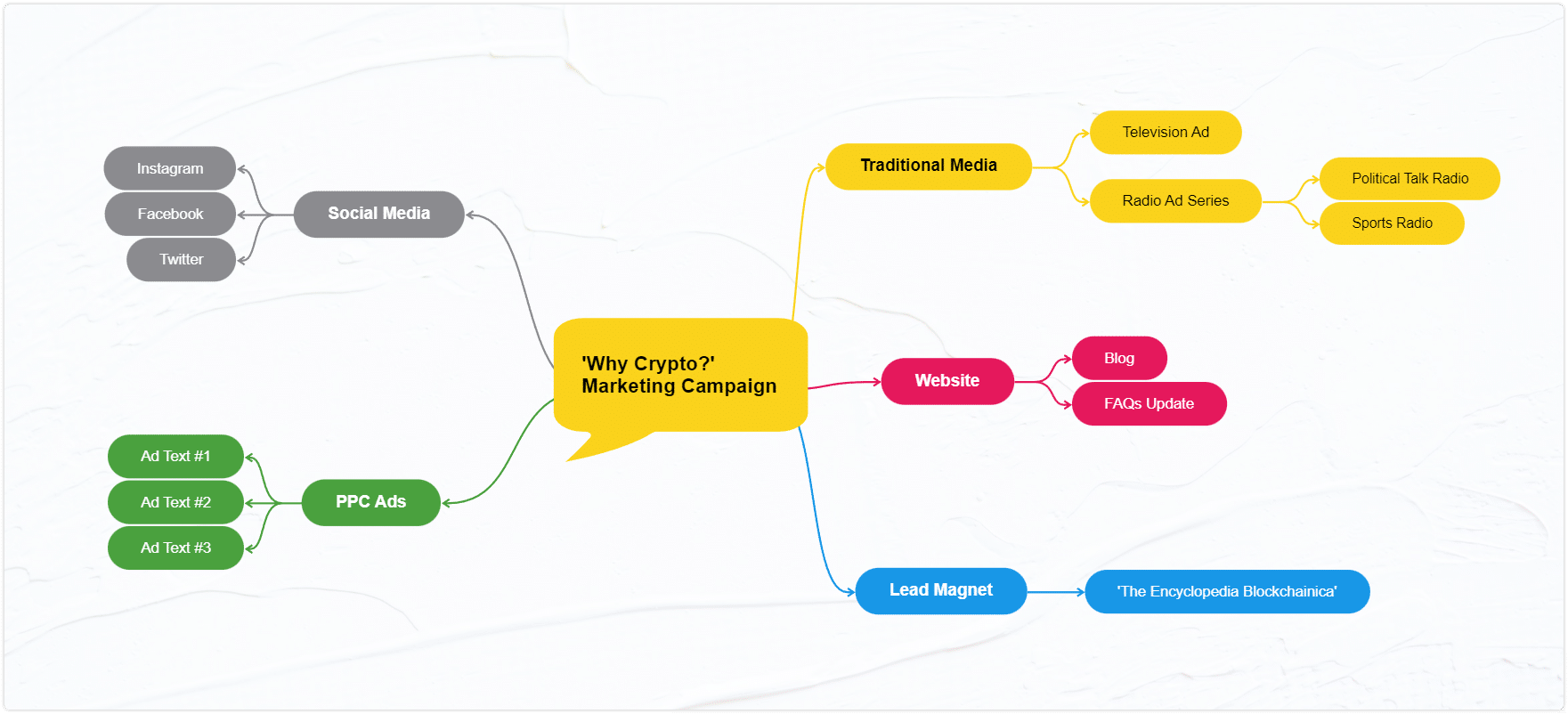
For example, a business mind map could be used to plan a new product launch. The central idea would be the product launch date, and the branches could represent different aspects of the launch, such as marketing, sales, and product development. Each branch could be further broken down into sub-branches, such as specific marketing campaigns or product features.
Overall, business mind maps are a powerful tool for project planning and organization. They can help teams generate ideas, plan projects, and communicate complex information in a clear and visually appealing way.
Taking advantage of these techniques
You don’t have to invest in specialized project management software to enjoy the above techniques. Mindomo, one of the best mind map apps, allows you to create most of the task management techniques we’ve covered.
In other words, mind mapping software like Mindomo won’t just allow you to create business mind maps. They’ll empower you with many project management techniques. You’ll be able to create Gantt charts, Kanban Boards, and more. And you can even create simple mind map task lists too.
That’s why mind map solutions aren’t just good for creating mind maps. They’re the ideal project management tool. And you can get started right now by visiting Mindomo and taking advantage of your free trial.
Keep it smart, simple, and creative!
The Mindomo Team


